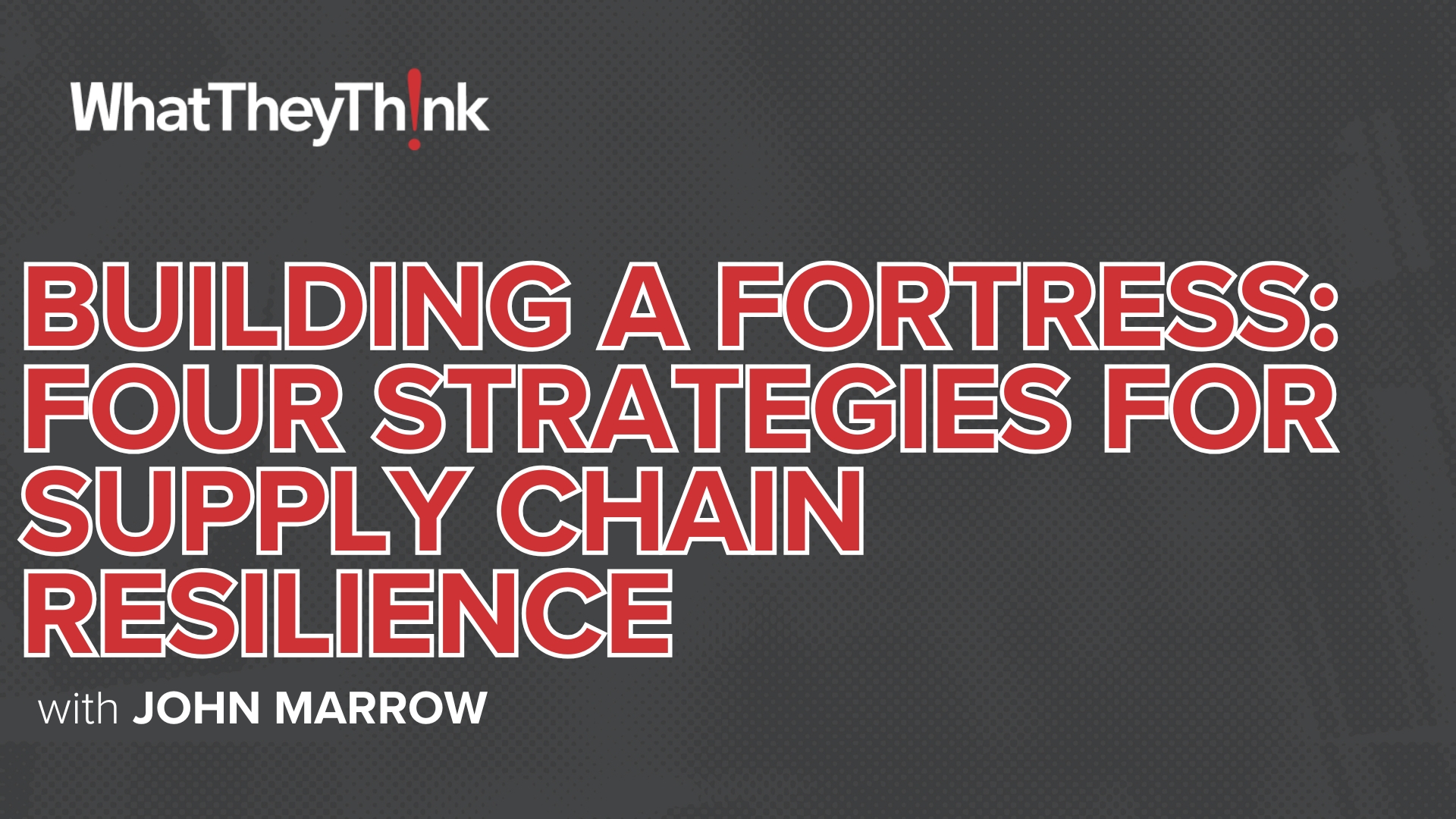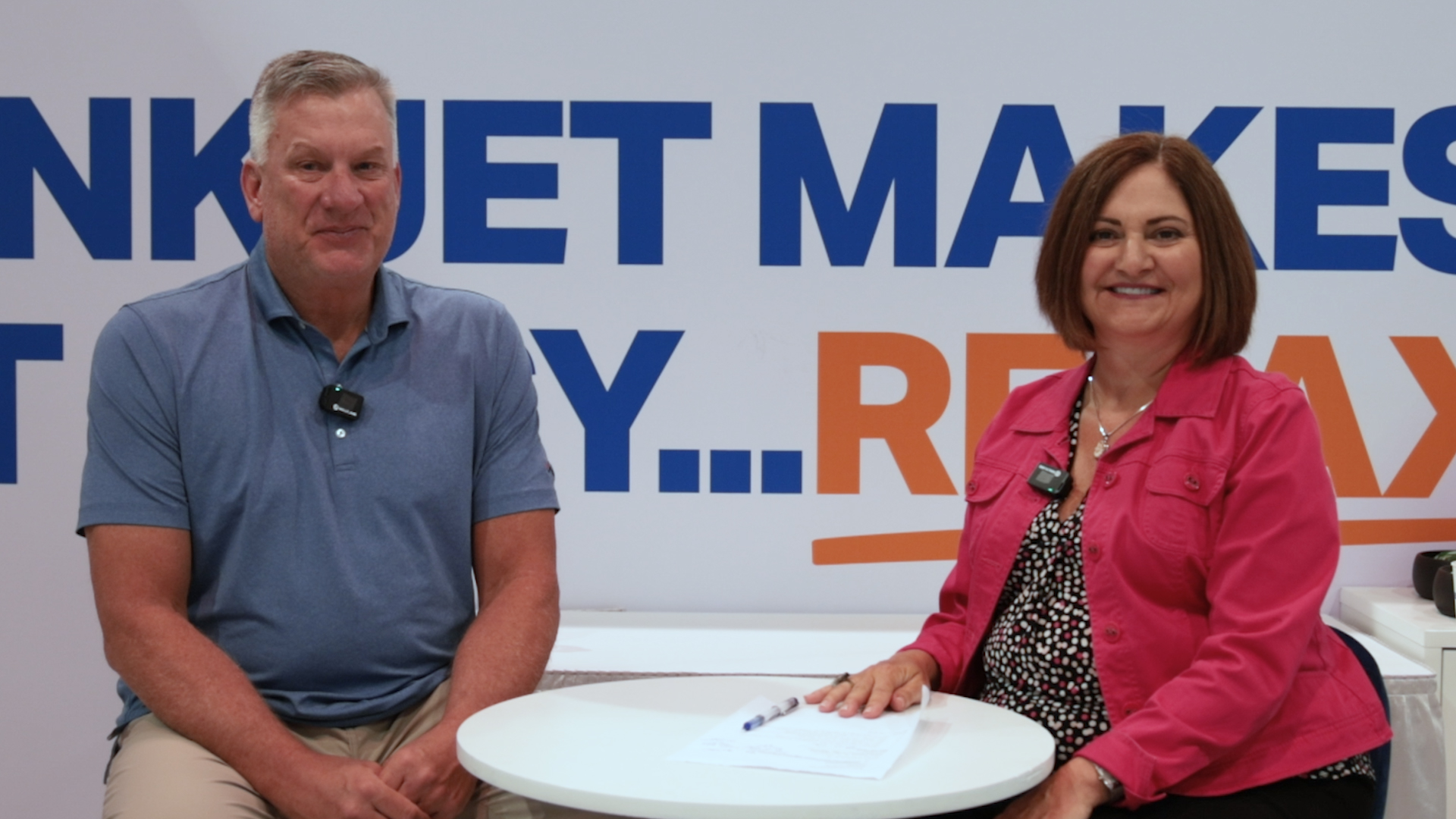Commentary & Analysis
Displaying 2351-2450 of thousands of articles
Insight You Need. Analysis You Trust.
Get the trusted insights you need to understand our evolving industry and emerging trends. Become a Premium Member.
Around the Web: Waist-Up Wardrobe. Glorious Graphene. Frank Financials. Lovely Letterpress. Missing Manual. Tenacious Trash. Terrifying Tattoos. Yay for Yurts! Periodic Pantone.
Fashion brands are designing for the Zoom generation. New face mask technology from Georgia Tech. Why Costco’s hot dog and soda combo only costs $1.50. The “United States of Letterpress”—a collection of letterpress samples from across the country. The user manual for the world’s oldest preserved digital computer has finally been found. A national park in Thailand mails trash back to litterers. The most tattooed man in France frightens small children. What may help New York City restaurants get through the winter? Yurts. Geeking out on the number 42. David Mitchell defends a broadband-killing television. Strippers try to get out the vote. All that and more in WhatTheyThink’s weekly autumnal miscellany.
Amazon Accelerates the Ecommerce Race: Luxury Fashion, Sustainability and Print on Demand
Amazon has revolutionized retail sales and personalized/customized service. Now it looks like the company is taking it to the next level with the addition of a massive digital textile printing investment as part of its luxury stores where Amazon Prime customers can buy a wide range of top luxury fashion labels. This is part of Amazon’s Climate Friendly Pledge, helping customers make sustainable and eco-friendly purchasing decisions. Read more.
Winners of BLI 2021 Outstanding Innovation Awards Will Soon Be Unveiled
During a live virtual webinar, Keypoint Intelligence – BLI will honor the products and technologies that will help shape production printing for years to come. Winners in the production print space will be announced on Monday, October 5, at 10 a.m. (ET).
Newly Agile: Crisis Demands New Agility, Not a New Normal
We often hear that we are entering a “new normal”—but this assumes that there was ever an “old normal.” Nothing has been “normal” in the complexity of business change for at least several decades. Contributor Preston Herrin identifies five steps for “training” your organization to respond to change and crisis with speed and agility.
How a New Generation of Print Buyers Impacts You
If you are engaging with print buyers, you know that the process looks very different from the way it used to. Just ask Maeghan Nicholson, marketing manager of Suttle-Straus, a large commercial printer just outside Madison, Wis. After a wide-ranging conversation about changes in the process, here are three takeaways.
Selling Web-to-Print Portals
Web-to-print portals are the enabling technology behind a “print program” which can elevate your relationship with your customers from transactional to relational. That relationship becomes “stickier” when technology is embedded into the customer’s organization.
BoSacks Speaks Out: Disruption and Leadership During a Pandemic
With all the multiple disruptions happening in today’s marketplace, there is absolutely no room for complacency and nostalgic dogma. You and your company have to rethink the unthinkable, challenge all your assumptions, and see through the obstacles. BoSacks cites two companies who are rethinking what it means to be a publisher.
Hybrid and Bespoke Packaging Solutions: Using Component Technology Expands Print Options
Bespoke or “custom-built” solutions are moving print from a stand-alone process to become a part of the product manufacturing process. David Zwang takes a look at the current bespoke and hybrid packaging solutions, and the advantages they can have over pure digital or analog solutions.
What’s Your Strategy Strategy?
In any business, there can be multiple strategies, developed in individual departments with the best intentions, but resulting in a series of disconnected plans that have little chance of moving the company forward. In this article, Pat McGrew defines what constitutes a good strategy, and how you can (and should) combine your company’s assorted strategies into a single cohesive and actionable strategy.
ISA Quarterly Economic Report Forecasts Long Road to Recovery
According to the Q2 2020 ISA Quarterly Economic Report, the COVID crisis accelerated some trends both for print and digital signage that had started to emerge pre-crisis. The sign industry isn’t expected to recover to 2018 or 2019 levels until 2022.
The Online Print Market in Europe Varies by Country, but Growth Is Universal
Online print in Europe offers a fairly mixed picture with some countries achieving considerable volumes generated via online ordering, while others are lagging behind. Still, volumes were on the rise everywhere—at least until the coronavirus crisis hit the industry. In this article, WhatTheyThink European section editor Ralf Schlözer looks at some revenue numbers, leading countries, major players, and growth rates.
AATCC Webinar Series Sheds Light on Textile-Related Testing for PPE
The American Association of Textile Chemists and Colorists (AATCC) has a robust program of educational webinars. Most recently, the organization has sponsored a series of three important sessions related to testing and standards for PPE, especially important during this COVID-19 pandemic which shows no signs of ending. Of particular interest to our readers is a Duke University research project that developed a low-cost method for testing the efficacy of facemasks.
Around the Web: Budding Basil. Canadian Crime Wave. Silk Sensors. Postponed Postcards. Fotomat Finishing. Television Trouble. Type Trek. Marvelous Mountain. Squirrel Saloon.
Canadian thieves target hot tubs and beef, for some reason. Silk-based ink can be used to create wearable sensors. A Michigan woman receives a postcard mailed in 1920. The rise and fall of the iconic Fotomat. An old TV causes trouble for a Welsh village. The typography of Star Trek. What is the best time zone? The Evel Knievel Stunt Cycle is back! All that and more in WhatTheyThink’s weekly autumnal miscellany.
Direct Mail Advertising—2010–2018
In 2010, there were 3,088 establishments in NAICS 54186 (Direct Mail Advertising). By 2018, the number of these establishments had dropped to 2,341. In macro news: initial unemployment claims rise again.
Printing and Cyber Risk: Deal with IT or Die from IT
Whether it be a ransomware attack or a breach that lets cyberthieves make off with customer data, cyber risk is an ever-present danger for any print business—made worse in the age of COVID with more employees working from home on their own devices. Kevin Keane lays out some essential steps print businesses can take to boost their cybersecurity.
New York Textile Designer Elizabeth Halpern Shares Her Creative Journey and Passion for Print
Meet New York Textile Designer Elizabeth Halpern. She started out studying architecture but switched gears to work in the New York fashion district. In this Texintel interview, Halpern shares the story of her journey from architecture to fashion to life as an independent designer. What has inspired her and what is her biggest takeaway from her work in the fashion industry. Find out more!
Smart Selling During COVID-19: Part 2
The COVID-19 pandemic has prompted businesses of all types to think differently about their bottom lines, profit projections, revenues, and sales strategies. This article, the second in a two-part series, discusses sales pitfalls to avoid and offers strategies for addressing current and future challenges. Last week’s article offered additional insight on smart selling by highlighting some sales best practices during pandemic times.
When Marketing, Don’t Forget the Influencers
When you are helping your clients select the target audiences for upcoming campaigns, are influencers on the list? We hear more and more about “influencer marketing,” but how does it work? Should you be helping your clients do it?
One Login Per Customer!
Don’t make your customers think. Don’t make your customers administer multiple logins in order to do business with you. Don’t make your online engagement a burden on your customers.
Spoonflower CEO Michael Jones Shares Insights on Future of On-Demand Textiles
Spoonflower was a pioneer in the field of on-demand textile printing and production. As the rest of the industry races to catch up, new CEO Michael Jones is aiming to take Spoonflower to the next level. Cary Sherburne talks with Jones and senior vice president of research and development Kerry King about their vision for the future.
Marketing for Today and Tomorrow: Signarama Helps Customers Navigate Their Changing Needs
Signarama’s Kristin Gallucci looks at the evolution of signage over the course of the pandemic, and how Signarama franchise owners have had to re-imagine their production, re-envision their offerings, and re-invent their marketing to create new and unique products to answer the needs of communities.
Creating A Sales Strategy?—Part 2: Where Are You Going?
In part 2 of a two-part series looking at sales strategies, Pat McGrew focuses on updating or building your strategy, formulating a vision statement, and getting everyone in the company on board.
More From Less: Lessons Shared From the Past
One of the keys to business success is being able to do more with less, and the key to success in doing more with less is to increase the return on your investment of time. Contributor Dave Fellman identifies ways you can be more efficient.
Are Living Clothes in Your Future? Designer Royal Aghighi Thinks They Should Be!
The textiles industry is a huge polluter. Although there are many sustainability initiatives at play, there is still more that can be done. Just ask multidisciplinary researcher Roya Aghighi. She’d like you to reimagine your wardrobe as living things. Find out what that means!
Around the Web: Score Statistics. Great Graphene. Wearable Wary. Creative Carpet. Python PPE. Viva Venus? Ludwig Listening. LEGO Listens. Covered Cakes. Perishing Peeps. Depressing Decoration.
The NFL season begins—and so does Scorigami. New graphene-based apparel. Amazon enters the fitness wearables market. The Simpsons as classic works of art. Public Service Announcement: a live snake is not an acceptable face covering. Is there life on Venus? How Beethoven’s Fifth Symphony changed the way people listen to classical music. The New York Times and Facebook collaborate on AR reporting. Children’s letters inspire LEGO to rethink its packaging. 2020 news would bewilder a time traveler from...2019. A “cake shield” for blowing out birthday candles. A Santa-wearing-a-mask Christmas ornament to enhance seasonal depression. All that and more in WhatTheyThink’s weekly pre-apocalyptic miscellany.
Printing Shipments: Summer’s Almost Gone
Printing shipments continued to rebound in July, coming in at $6.75 billion, up from June’s $6.63 billion. We remain hopeful, but as we have been seeing lately, we are far from out of the woods virus-wise and we may see shipments start to decline again come the fall.
Innovating the Proofing Cycle
Printers need to consider innovations that negate the need for proofs (hard or soft) except under exceptional circumstances. Hint: train the customer to submit print-ready PDFs that are truly ready to go. You will still need to do preflight, etc., but the emphasis should be on taking the time lag created by the proofing cycle out of the process.
Smart Selling During COVID-19: Part 1
On a global scale, sales representatives are finding it impossible to sell the way they used to—face-to-face meetings are difficult, some prospects still haven’t returned to their offices, and businesses and consumers remain on high alert. This article, the first in a two-part series, highlights some sales best practices during a pandemic. The second will discuss sales pitfalls to avoid and provide strategies for addressing current and future challenges.
Speed x Sustainability = The Digital Imperative
One of the ways the textiles and apparel industry is starting to adjust to the stresses exposed by the pandemic is to accelerate adoption of digital technologies. But what is the appetite for change, really? Textiles expert and WhatTheyThink contributor Debbie McKeegan shares her insights.
The Day an Infectious Disease Expert Became a Trading Card Celebrity
Dr. Anthony Fauci’s trading card is the TOPPS Company’s best-selling card of all time—and a product of the ruthless efficiency of the company’s production workflow. What lessons are there for the rest of the industry?
Successful Print Software Implementation Mindset
Don’t have a mindset like a lighthouse. Have a mindset like a fast, nimble, ship with the most advanced navigation systems. When navigating the waters of the print manufacturing industry, stationary businesses will not survive.
What Do We Talk About When We Talk About Industrial Printing?
The definition of “industrial printing” has been changing, especially with the advent of inkjet printing, which is opening up all new “industrial” applications. This article looks at the state of industrial printing today, and the various applications that comprise it.
QR Codes Are Consumer- and COVID Compliance-Friendly
QR codes can be used in many different ways by restaurants and other small businesses to interact with patrons in an engaging way, as well as comply with COVID regulations and promote public health and safety. ColorKarma’s Shoshana Burgett escaped quarantine and looks at several examples of how restaurants and pubs are using QR codes.
HP Indigo Ups the Ante for Quality and Productivity in Digital Print
In this article, sponsored by HP, Senior Editor Cary Sherburne provides an overview of the latest features of the HP Indigo 12000 and HP Indigo 15K digital presses, including innovations that take digital printing to a new level of quality and productivity. She also cites on-site experiences of two customers, L&L Printers and New London.
How CCM Technology Vendors Can Help Clients Achieve CXM in the New Digital Reality
The Customer Communications Management (CCM) market continues to undergo radical changes, especially in the wake of COVID. Aspire CCS recently published “Understanding the New Digital Reality,” an extensive study of the effects of the pandemic and its resulting economic and cultural fallout on the customer communications market. This third of a four-part series focuses on how social distancing measures have forced many businesses to enable their employees to manage customer communications remotely, further accelerating the transformation from CCM to CXM by pushing more organizations toward cloud computing.
Long-Time Print Innovator and Serial Entrepreneur John Lacagnina Shares Thoughts on Past, Present, and Future of Print
I first crossed paths with John Lacagnina when he brought to market the world’s first network production printing solution through his company at the time, Entire. Over the ensuing years, he has continued to innovate and bring dynamic change to the industry. Learn more about his story, his thoughts about the industry, and what he’s up to today.
SPESA Continues to Support the Sewn Products Industry in the Time of COVID-19
Guest contributor Michael McDonald, president of SPESA, provides an update of how the association has been helping its members in the sewn products industry cope with the COVID-19 pandemic, and what its updated roster of events looks like.
Improve RFP Effectiveness Now: Don’t Fall Prey to the Pitfalls
Even during this global pandemic, request for proposals (RFP), request for information (RFI), request for quotes (RFQ) have not stopped, but successfully bidding on them has changed. Lisa Magnuson walks through some of the hazards, and ways of avoiding them.
Around the Web: Fashion’s Future. Futuristic Fashion. Luxembourg Library. Senryu Signage. Robot Writer. Ruinous Reveals. Vertiginous Van. Festive Fungi.
The San Francisco Bay Area skies match PANTONE 130U. For ideas on how fashion should evolve, look to China. Programmable, 3D-printed textiles. Creative signage for the National Library of Luxembourg. Poetic signage is randomly appearing throughout the US. A robot pens an essay for The Guardian. Tired of cloth masks—how about transparent bubbles? What’s with gender reveal parties? Someone customized a van to drive upside-down and backwards, for some reason. Because it’s 2020 and why not: shiitake mushroom-flavored candy canes. All that and more in WhatTheyThink’s weekly gender revealing miscellany.
Outdoor Advertising—2010–2018
In 2010, there were 2,378 establishments in NAICS 54185 (Outdoor Advertising, although until 2012 this category was referred to as “Display Advertising”). Establishments dipped in the mid-2010s, but hit a new peak in 2018 at 2,765 establishments. In macroeconomic news: unemployment is down, but unemployment claims data paint a dark picture.
The Potential Impact of Brexit on the Printing Industry
The clock is ticking for the Brexit negotiations and the future relations between the UK and EU are still unclear. Print will be impacted as well; not only print products that are exported and imported, but also raw materials and machinery. This article by WhatTheyThink European section editor Ralf Schlözer looks at some trade volumes and implications of the Brexit for the printing industry.
Can Online Ordering Save Print Service Providers in 2020?
There is no question that the printing industry at large has suffered due to the impact of COVID-19 and the subsequent economic downturn. This article provides a brief overview on the toll that the pandemic has taken on printing companies’ financials and explores whether e-commerce might help turn things around.
Fashion Needs a Seismic Reset—It’s a Complicated Supply Chain and Reinvention Is Not as Easy as You Think
This article by textile expert and WhatTheyThink contributor Debbie McKeegan was originally published on Which PLM. In it, she notes the fashion industry is broken, not a surprise to anyone who has been following it, and suggests where we can go from here and why it might not transform as quickly as we would wish.
“Doing Good” During the Pandemic Pays Off in More Ways Than One
During times of crisis like the COVID-19 pandemic, consumers look to brands to provide leadership. It’s not enough to provide great products, great prices, and great service. Consumers are looking to brands to have a social conscience, as well. This look at statistics collected by Engage for Good provides a number of lessons for both printers and their customers.
Adult Learning at Your Print Business
Like it or not, all work involves learning. Not like our education system, but self-directed, project-based learning. You have to be a self-learner and as a leader you have to hold your people accountable for self-learning.
The Target Report Annual Recap—August 2020 TTM M&A Activity
M&A activity in commercial printing dips, tuck-ins still predominate; packaging deals are driven by PE, labels lead the pack; wide format transactions pick up; and more…
Disaster Recovery and Business Continuity Provide Real Benefits
Designing and creating policies and procedures that ensure that essential business functions/processes are available during and after a disaster is an important process for all businesses. If done properly, it can actually prove to be beneficial beyond business continuity and disaster recovery as a way to handle production overflow during peak times
Beyond the Hype: The Reality of Direct-to-Shape Printing
Printing company owners are seeking new markets as the pandemic affects their businesses, and many owners are evaluating an opportunity that leverages their inkjet printing expertise—digital direct-to-shape (D2S) printing. Contributor Pete Basiliere details the market opportunities for print providers in the D2S space.
Velox Brings Mass-Production to Digital Direct-to-Shape Printing
Velox specializes in industrial-scale direct-to-shape digital printing—or, as the company calls it, “decorating”—predominantly on tubes, aerosols, and other cylindrical items. We take a look at the capabilities of Velox’s technology.
Around the Web: Printing Proposal. Talented Typist. Feral Fabric. Interactive Ink. Flight Fantasy. Dying Dining. Transforming Technology. Silly Spectacles.
A beau proposes to his typography-loving girlfriend at the Museum of Printing. A “typewriter artist.” “Living fabric” that purifies the air around it. Interactive, “clickable” paper that doesn’t require an external power source. A videogame that simulates flying in coach, for some reason. Record chain restaurant bankruptcies. The accelerating adoption rate of new technologies. “Anti-procrastination glasses.” Sensible and silly snacking. All that and more in WhatTheyThink’s weekly doomscrolling miscellany.
Retail Sales: A V-Shaped Recovery?
The Census Bureau recently released its monthly report on retail sales, and after a dramatic plummeting, July retail sales were $536.0 billion, up 1.2% from June (seasonally adjusted), and 2.7% above July 2019. But this may paint a rosier picture of retail than is warranted.
Customization in the Manufacturing Sector and a New Definition for Fast Fashion
What’s driving customization in the textile manufacturing sector, and why do we need to redefine fast fashion production? These questions are answered by textiles expert and WhatTheyThink contributor Debbie McKeegan, who offers a look at Fashion Enter, an ethical, sustainable business that manufactures sewn products and which has embraced digitization and continue to invest in the future.
Supporting Remote Employees During COVID: Working from Home or Hardly Working?
Many of us are still struggling to figure out how to best work from home as the COVID-19 pandemic continues. Although some found the sudden transition from “work office” to “home office” earlier this year to be relatively simple, other struggled without the devices and support systems that they would normally rely on each day. This article cites data points from recent Keypoint Intelligence research to explore how people are coping with limited resources while working from home.
Canon Solutions America Launches Fifth-Generation Arizona Series UV Flatbed Printer
Yesterday, Canon Solutions America announced the new Arizona 2300 Series wide-format flatbed printer. The new series is built on a novel approach to media handling that eliminates zones, masking, and taping, helping speed job changeover and reduce operator intervention.
How COVID-19 Is Changing Consumer Patterns—and Why Marketing Strategy Should Change With Them
Marketers are anxiously awaiting the world to “return to normal,” but what does normal look like? Even when consumers start buying again, there may be radical changes in product categories, segmentation, and product positioning that will outlast the pandemic. Do your clients know what they are? Are they prepared to adjust to them?
Process Creators vs. Process Followers
As your business matures and grows, you will need to improve your processes. As software invades every corner of your business, your processes have to change to adapt to the new reality. You need to know who in your company is a process creator.
Inkjet Innovation Week Highlights: New Inkjet Hardware, Software, and Media Are Driving the Market Forward
In June, Inkjet Insight presented Inkjet Innovation Week, a series of webinars that organized the latest inkjet announcements in the context of current market trends and new application segments. The topics covered included trends in production inkjet in the document and packaging space, snapshots of new inkjet product releases, highlights of recent software updates driving inkjet productivity, and an overview of new inkjet papers and specialty media opportunities. This article provides some highlights of the webinar series.
All Projects Great and Small: Phil Fox Takes Signs By Tomorrow Fort Worth to New Heights of Signage
Offering a diverse array of applications, from banners and feather flags, to vehicle wraps, to ADA signage, to channel letters 30 stories above the ground, Signs By Tomorrow Fort Worth has grown dramatically since Phil Fox bought the franchise in early 2018. An emphasis on marketing and versatility have been the keys to growth—even in the midst of a global pandemic.
Watch Out Inkjet: Toner Appears to Be Poised to Make a Comeback
Now that production inkjet has finally reached the offset quality barrier, some believe that it is the death knell for toner. Although as Mark Twain said, “The reports of my death are greatly exaggerated” and based on recent developments in toner technology I believe that is the case here as well.
Bringing Fashion Back to St. Louis
Did you know that St. Louis, Mo., was a fashion hub from the turn of the 20th century until the end of World War II? Now there are significant efforts to reestablish the city’s fashion prominence, led by the Saint Louis Fashion Fund. We spoke with co-founder Susan Sherman, and the CEO of high-tech knitting manufacturer Evolution St. Louis, Jon Lewis, to learn how their initiatives are progressing.
Automating Imposition: Agnostic, Smart, and Easy?
Considering most printing companies have an assortment of presses, finishing equipment, and product types, having disparate imposition workflows is a very inefficient way to manage it. Ultimate has raised the bar again with the just-released Impostrip 2020.
Around the Web: Sunflower Savior. Catalog Characters. Digital Decor. Sumptuous Sewing. Signage Surveillance. Abused Androids. Postal Paintings. Cosmic Comm. Rock Riddle. Foul Fraud.
The Hidden Disabilities Sunflower program comes to the US. IKEA Taiwan adds Animal Crossing characters to its catalog. Also: 70 years of IKEA catalogs are now online. Amazon launches AR-based furniture decorating. A “thread artist” sews realistic embroidered foods. Clear Channel’s new billboards can track your movements. How to combat the growing scourge of robot abuse. A photo essay looks at the US’s New Deal-era post office murals. John Shepherd devoted his life to trying to contact space aliens. Newly discovered research notes describe an attempt to decipher the Rosetta Stone. Two words: vomit fraud. All that and more in WhatTheyThink’s weekly virtual miscellany.
PR Agencies—2010–2018
In 2010, there were 8,219 establishments in NAICS 54182 (Public Relations Agencies). After a slight contraction due to the Great Recession, PR agencies started to grow again, peaking at 8,548 establishments in 2018. In addition, we estimate there were an additional 37,954 freelance or sole proprietor PR agency establishments in 2018. In macro news: Q2 GDP revised up.
“Circular Is the New Black”: Redefining the Fashion Industry
There has been a great deal of discussion here and elsewhere about how the pandemic has accelerated efforts to restructure the textiles and apparel supply chain, resulting in both companies exiting China for destinations such as Vietnam and India, as well as reshoring of textiles and apparel in the US and Europe facilitated by the growing availability of digital technologies that enable new ways to design, manufacture and distribute textiles and apparel. This article contains a review of a report from the Ellen MacArthur Foundation: “A New Textiles Economy: Redesigning Fashion’s Future.” Well worth reading in full!
The Impending Creativity Boom in Print
Amid uncertainty about what the future might hold, many people have discovered that the COVID-19 pandemic has given them additional time for projects. This article explores the recent uptick in creative output and considers what this might mean for creative amateurs and the industry.
Peek Inside Salesforce.com’s “State of Marketing Survey” (Sixth Edition) and the Challenges It Paints for Marketers
Growing data repositories, fractured data management, and the need for automated solutions to extract actionable insights are among the top challenges seen in the data of Salesforce.com’s sixth annual “State of Marketing Survey.”
Augmented Reality: Revolutionizing the Value of Print
Augmented reality (AR) has played a somewhat limited role to date in the world of print and packaging, with its largest footprint in the digital world—but that may be about to change. Cary Sherburne looks at some recent AR-enabled catalogs developed by Paris and Montreal’s ARGO.
Online Ordering Adoption Begins with Customer Service
Your customer service team is the place to start online ordering adoption. You can practice your sales pitch on them and then teach them how to pitch your customers into a self-service workflow.
Creating A Sales Strategy—Part 1: Where Are You Now?
Now that you know that you have both a marketing workflow and a sales workflow, it’s time to consider your sales strategy and what you need to support that strategy. Pat McGrew identifies what you need to evaluate your strategy and support it with collateral.
Xanté’s InfoMark Finds Religion...Or Vice Versa
Last year, Xanté had launched InfoMark, a way of linking supplementary and complementary digital and multimedia assets to print media by means of a four- or five- digit code. Since it was launched, InfoMark has evolved, and extenuating circumstances have led to its growing adoption in some markets that Xanté had not originally considered. We caught up with Xanté president Robert Ross.
Connecting The Dots—Kornit’s Acquisition of Custom Gateway Creates Powerful Print On Demand Solutions For Ecommerce Fulfillment
Kornit is expanding its digital capabilities through the acquisition of Custom Gateway, positioning itself to offer a complete end-to-end digital production process. Textiles expert Debbie McKeegan explains.
drupa 2021 Essentials of Print: The Most Exciting Design Tool Ever
Art director Hadar Peled Vaissmanlays out how the design community should embrace digital print as their new design tool, as it can help designers reach new heights of creativity, stretch the limits of their imaginations, and design campaigns that better connect with younger generations.
How Casting Votes By Mail Could Work (Well)
Safe, socially distanced general elections in 2020 are proving to be a boon for print and mail service providers that can handle specialized operations, including “ballot mail.” Contributor Mark Vruno takes a close look at vote by mail (VBM).
Printing Shipments On the Rebound: Will It Last?
After a dismal April and May, printing shipments rebounded in June to $6.63 billion. It’s a hopeful sign, but the COVID-19 crisis is far from over. It’s going to be a tense fall.
Around the Web: Data Design. Militant Masker. Dairy Ditties. Pixel Papa. Transparent Toilets. Tudor Trickery. Body-Shaming Bistro. Fantastic Flash.
Stock market data transformed into beautiful landscapes. A “mask gun” shoots face masks onto people’s faces. A deep dip into ice cream truck music. A woman’s driver’s license photo is an empty chair. Russell Kirsch, the inventor of the pixel, passed away at 91. Japan’s public lavatories with see-through walls. A 16th-century deep fake. A look back a the first “interactive TV show”—from 1953. A restaurant in China weighs customers before they order. The making of the great camp classic— 1980’s “Flash Gordon.” All that and more in WhatTheyThink’s weekly unmasked miscellany.
Epson Launches Its First Industrial-Class Dye-Sublimation Printer
Epson’s new SureColor F10070 sports new features and capabilities, sure to help spur growth in digital textile fabric printing. Cary Sherburne takes a look at this new printer.
Distance Working/Learning During a Pandemic: Pros and Cons
Earlier this year, the world changed forever with the COVID-19 outbreak. Businesses and schools temporarily shut down, and many employees and students were suddenly forced into a remote setting with little—or no—advance warning. Although some employees and students have thrived in this distance situation, others have struggled and continue to struggle. Amid continued uncertainty and a new school year just around the corner, this article explores the pros and cons of remote working and distance learning.
The Impact of Remote Working
What potential business disruptions should we be thinking about post-COVID-19? There are several. Most of them, at first glance, seem inconsequential but, on closer examination, could have significant impact. In this article, Wayne Lynn looks at changes in how we work and examines how they could impact the way we do business after the crisis has passed.
Marco Boer of IT Strategies on How the Pandemic Will Drive Inkjet Growth
Conversation with Marco Boer, vice president of IT Strategies, about the changes in production being driven by the pandemic, including the impact of the cost of paper on hardware selection.
The COVID-19 Era Is a Time to Contract and Rebuild Your Print Business
COVID-19 is a challenge and an opportunity to rebuild and make changes to your business that would otherwise be met with the standard “this is how we’ve always done it” line of resistance.
We Must Shift to a Bespoke Manufacturing Model
“Bespoke” means custom-made and designed to a particular requirement. Local-to-local, bespoke, organized, and automated manufacturing is not without its challenges, but post-pandemic, it may be a better option than relying on a single global provider. ColorKarma’s Shoshana Burgett explains all about bespoke manufacturing and the role of design.
What’s in Your Marketing Workflow?—Part 2: Creating a Plan
Last month, Pat McGrew offered tips and strategies for optimizing your sales workflow. This month, she turns to marketing workflows. When times get tough, marketing often disappears from the radar. For companies that have not been marketing their services, the challenge of remaining visible in a chaotic market is even harder. In Part 2 of this two-part series, Pat describes how to develop a strategic marketing plan.
A Printer’s Guide to Augmented Reality, Virtual Reality, and Interactive Print
When you make print interactive—with QR codes, AI, Augmented Reality (AR) and Virtual Reality (VR)—you bridge analog and digital worlds, capture the attention of prospects and customers for a longer period of time, and foster smoother business operations. Joanne Gore provides an overview of interactive print technologies and the opportunities for printers.
Six UK References for Antiviral Textiles and Specialist Coatings that You Should Consider
In light of the global pandemic, increased attention is being paid to antimicrobial coatings for fabrics. Formerly reserved for medical and healthcare interiors, these fabrics are now in demand across multiple segments.
Mail Volumes Plunge in the Age of COVID
Since the COVID-19 lockdown across the country in early March, mail volumes have plunged—but the pandemic is only accentuating the USPS’s pre-existing problems. This feature, by Paul Miller, vice president and deputy director of the American Catalog Mailers Association (ACMA), also includes highlights from an ACMA survey of catalog mailers and suppliers.
Advertising Agencies—2010–2018
In 2010, there were 13,248 establishments in NAICS 54181 (Advertising Agencies). After a slight contraction due to the Great Recession, agencies started to grow again, peaking at 13,737 establishments in 2018. In addition, we estimate there were an additional 60,994 freelance or sole proprietor agency establishments in 2018. In macro news: initial unemployment claims dip below 1 million.
Around the Web: Fashion’s Future. Revised Revenues. Calling Cards. Flaming Photography. Slithering Smartphone. Video Vacation. Manhattan Migration. Mechanical Music. Rim Recording.
Online retail is the future of fashion. The NYT’s digital revenues surpass print for the first time in 170 years. WTIN is making its must-read Digital Textile eMag available for free. Has the ever-resilient business card finally met its match? A pictorial celebration of the postcard. The making of one of rock's most iconic album covers. A smartphone case with robotic legs allows a phone to crawl to its charging pad, creepily enough. The last remaining Blockbuster Video store is a retro Airbnb. Electrical outlet covers that double as motion-sensitive lights. Retailers are fleeing NYC. All that and more in WhatTheyThink’s weekly virtual miscellany.
Keeping Customers Educated in the Age of COVID-19
We all understand that it’s important to develop a sound marketing strategy during these uncertain times, and educating your customers is a vital component of this strategy. Businesses like Apple and Microsoft are well-known for offering great on-site training demonstrations so customers can get the most out of their devices. Unfortunately, in-person education isn’t an option during a pandemic. The good news is that there are still many ways to educate consumers and keep them engaged even if a live meeting is impossible.
Digital Textile Printing Inks Sets and Print Processes Explained
As digital textile printing continues to gain steam in light of a needed supply chain restructuring for the industry, it can be confusing, especially for new entrants to the field, which ink is best for each fabric type and application. Textiles expert and Texintel CEO Debbie McKeegan explains the differences between five different digital textile printing ink sets.
Identifying Important Data Decisions
Data decisions get made everyday in your print business. Here are three examples of important data decisions that we can all learn from.
Software Makes Personalization Easy...But We Still Have to Think
Just because certain types of personalization have become easier to implement doesn’t mean that the human element isn’t important. On the contrary, it’s more important than ever. Software makes it easier to spit out “personalized” documents, but the people behind those documents still have to think.
Sustainability: The Great Reset—What Can We Do?
The planet earth and its natural resources have not grown in over 4 billion years, yet the population has increased from 800 million in 1700 to almost 8 billion in 2020, all competing for their share and putting great stress on the environment and the population. It is obvious that this rate of growth can’t be sustained without some proactive behavioral changes.
Partnering! Canva Brings the Creative to Office Depot Customers
Thanks to a new collaboration between the global design platform Canva and the robust workplace solutions team at Office Depot, small businesses can quickly and easily develop creative content for different kinds of print and non-print applications—everything from reports and posters to menus and yard signs, even social media marketing campaigns.
Buyers are On The Move and On Track—July 2020 M&A Activity
CJK Acquires Quad Book Plant, Mittera Executes on Strategy (Again), and more…
Printing Plants and Robots After the Coronavirus
This article addresses how to protect the labor force in printing plants from being infected by viruses and get a better and more profitable company structure by implementing Industry 4.0.
EU Graphene Flagship Initiative Explores Innovative Graphene Uses
We’ve been following some of the research on graphene for some time now. Developments and innovations are continuing, especially in the European Union. Here we review the EU Graphene Flagship Initiative and some of the developments related to the textiles and apparel industry, including how graphene can affect advances in wearables.
Around the Web: Missing Mondays. Silly Signage. Adapting Architecture. Foxy Fetishist. Cirrus Sneakers. Crazy Convertible. Pixellated Pack. Circular Sketching.
There will no longer be a Monday print edition of a newspaper anywhere in Wyoming. Amusing social distancing signage from Down Under. How will the COVID pandemic affect architecture? Germany’s shoe-stealing fox. 3D-printed sneakers based on clouds. The Boatswagon boat-car hybrid is up for auction. 8Bit Playing Cards simulate 1980s-era computer graphics. A new, limited edition Etch a Sketch lets you draw circles. All that and more in WhatTheyThink’s weekly virtual miscellany.
May Printing Shipments—Now It’s Serious
Printing shipments for May 2020 came in at $6.42 billion, down from $6.51 in April and way down from $7.21 billion back in January. This may be as dire as shipments get, but we don’t expect to break $7 billion again for a long while.
The New Wearable Takes Center Stage Thanks to Digital Textile Printing Technologies
As the global pandemic crisis has evolved, the print community has sprung into action, converting capacity freed up by declining demand to production of personal protective equipment (PPE) for first-line workers and average citizens. This includes, of course, face masks, which has turned into big business. Read about one example of how a supplier has provided tools to make production of these life-saving masks easier.
Developing a Marketing Strategy: Positioning for Success During COVID-19 and Beyond
Due in large part to the COVID-19 pandemic, businesses are now thinking very differently about their bottom lines, profit projections, and revenues than they were just a few months ago. Keypoint Intelligence’s research has confirmed that most print service providers (PSPs) have seen a drop-off in sales and/or an uptick in cancelled orders due to current market conditions. This article explores smart marketing techniques during COVID-19 and beyond.
- Questions to ask about inkjet for corrugated packaging
- Can Chinese OEMs challenge Western manufacturers?
- The #1 Question When Selling Inkjet
- Integrator perspective on Konica Minolta printheads
- Surfing the Waves of Inkjet
- Kyocera Nixka talks inkjet integration trends
- B2B Customer Tours
- Keeping Inkjet Tickled Pink
© 2024 WhatTheyThink. All Rights Reserved.














